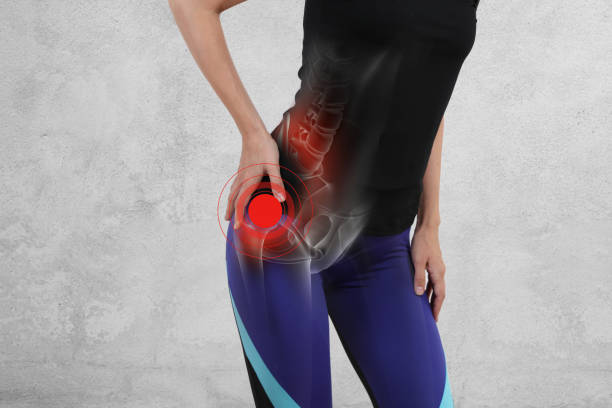First thing’s first…let’s start by correcting a few common myths about hip pain.
- “I must have over-used my hip due to years of running or hiking for recreation.”
- “My job requires me to be active and my hips are getting worn out.”
- “Now I have osteoarthritis and have to rest my hip by doing less.”
- “Due to my age and pain, I should consider a hip replacement sooner rather than later.”
Surprisingly, every single one of these statements is incorrect!
The truth is, most of us are not consistently active enough in our adult lives to maintain the flexibility and strength required for full pain-free hip function.
It is not the more active people who consistently report hip pain but those who have a more sedentary lifestyle or who have become overweight.
The expression “move it, or lose it” clearly relates the health of all the joints of the body and the surrounding muscles.
Common treatments for hip pain are medication, injections, surgery, acupuncture or electrical modalities such as ultrasound, TENS and interferential therapy. However, while some of the treatments may appear to have short-term benefits, there is no strong evidence that they provide effective long-term relief from pain and loss of function.
You may also have been given exercises to perform and maybe even found that these provided some benefit. However, many people do not realize that stretching and strengthening your muscles alone does not automatically give you relief from hip pain.
Other Things To Consider…
Aggravating Factors?
Doing the correct exercises is only part of the solution; the other part we need to consider is the aggravating factors that contribute to your hip pain, especially prolonged positions or postures.
Here are some common aggravating activities, positions or postures for those suffering with hip pain:
1. Prolonged standing
2. Lying on the painful side
3. Prolonged sitting (especially with the legs crossed)
4. Carrying weight unevenly on one side of the body
If you don’t identify and alter these aggravating activities or postures throughout the day then improvement and relief from performing the correct exercises will be short lived.
Hip vs Low Back?
The hip has a close relationship with the low back or lumbar region of the spine, and commonly the pain and loss of movement we feel in our hip is actually coming from a problem in our low back.
Therefore, with all hip problems it’s important to attempt to exclude the low back as the source of the pain before focusing treatment and/or exercises to the hip itself.
Here are three important questions to consider:
- Do you have pain in your central low back area, and particularly back pain on the same side as the hip pain?
- Does coughing or sneezing produce or increase your hip or back pain?
- Do you have any areas of numbness, pins and needles or weakness in the knee or foot on the same side as your hip pain?
If you answered YES to any of these questions, it is likely your pain is coming from your low back.
However, if you answered NO to the questions, here are two other aspects to consider to help determine the source of your hip pain: pain location and pain behavior.
Pain Location
The site of pain caused by both hip or low back problems can be similar in some cases.
As a general rule, pain originating in the hip will be felt in the outside or front of the hip or in the groin region, and may be associated with stiffness or weakness.
This general hip pain may on occasion radiate down towards the thigh or knee (Figure 1), but it is uncommon for affected hip structures to cause pain at the back of the hip or to radiate upwards into the low back (Figure 2).
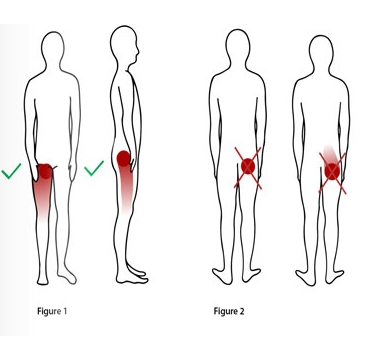
However, it is possible for the back pain to radiate downwards towards the hip and even into the knee or foot (Figure 3).
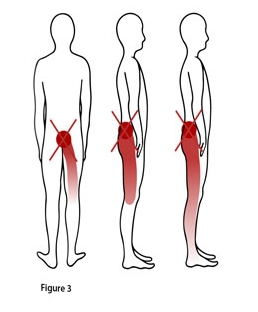
Similarly, a hip problem will not give you a sensation of pins and needles or numbness in the leg or foot. These symptoms are more likely to be referred from the low back.
Pain Behavior
In most most cases, pain originating from the structures in and around the hip is produced or aggravated by moving the hip or leg – particularly during walking, or by rotating or moving the hip sideways to get in and out of bed or drying your feet for example.
Hip pain originating from the low back is frequently altered by low back positions or movements.
To determine whether low back movements affect your hip pain, I recommend you perform the following test movements, carefully noting any change in your pain location and intensity.
Test Movements
Slouched vs. Upright Sitting
Sit on a stool of chair height or sideways on a kitchen or dining chair. Allow yourself to slouch completely (Photo 5). Relax for up to 30 seconds in the slouched position and monitor the intensity and location of your hip pain.
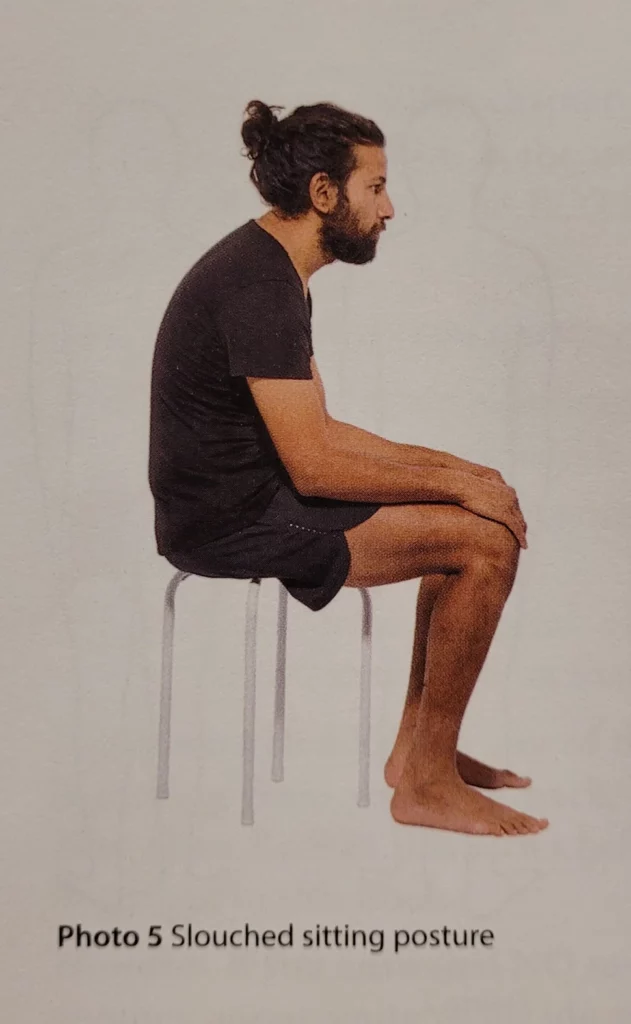
Now move slowly up into an upright position and accentuate the curve in your back (it is called a lordosis) until you are in the extreme of the sitting position (Photo 6).
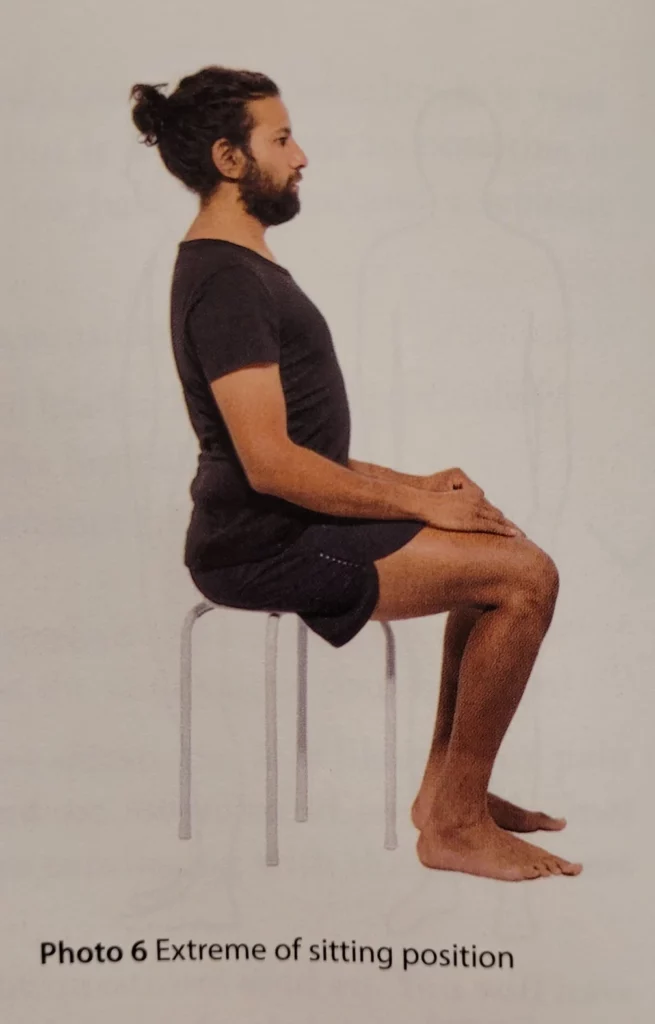
If these low back postures have no effect on your hip pain it is probable that the hip is the source of your pain. However, if these low back positions change the intensity of the pain, or the location of your hip pain towards or away from your back, the source of your pain may be the structures in your low back.
To further determine whether back movements affect your hip pain, I recommend you perform the following test movements, shown to be a reliable guide to identifying symptoms that arise in the back.
Standing Movements of the Low Back
During each of these movements monitor your pain as you move and also after the last of the bending movements to see if the location or intensity have changed.
1. Back flexion in standing (bending forward): Stand upright with your feet about shoulder-width apart, and allow your arms to hang loosely by your side. Bend forward and run your hands down your legs as far as you can comfortably reach while keeping your legs straight. Maintain this position for 1 or 2 seconds, then return to the upright position. Repeat this exercise up to 10 times slowly and rhythmically, trying to bend a little

